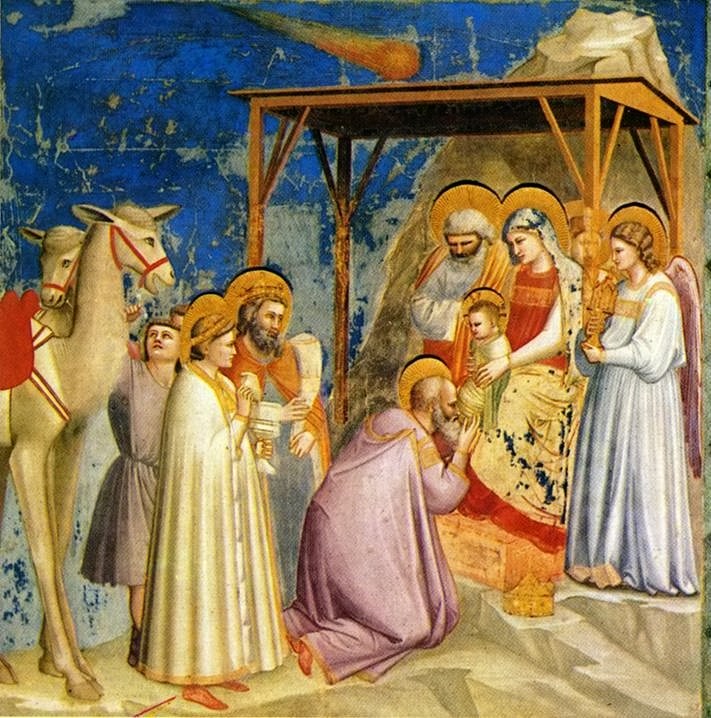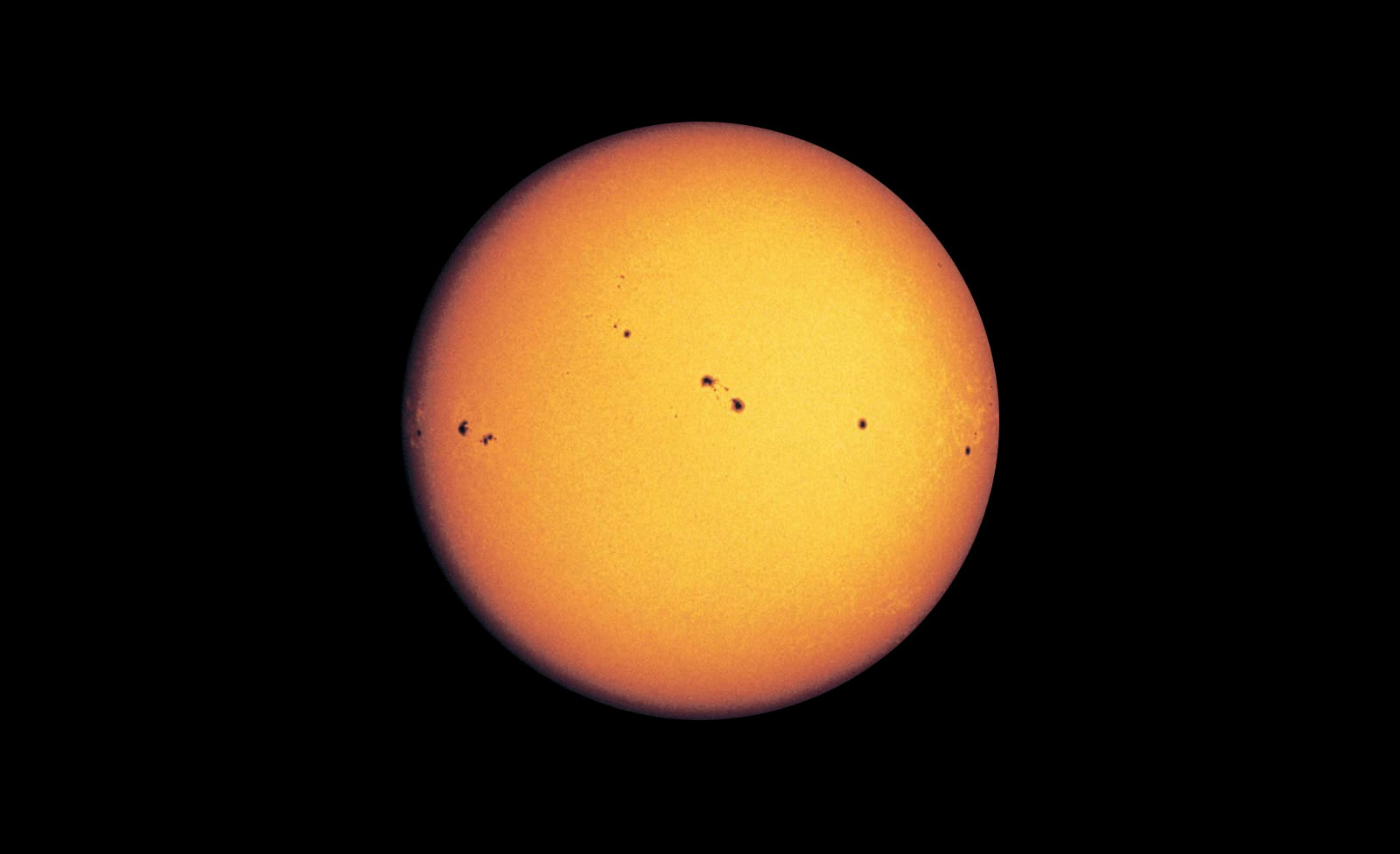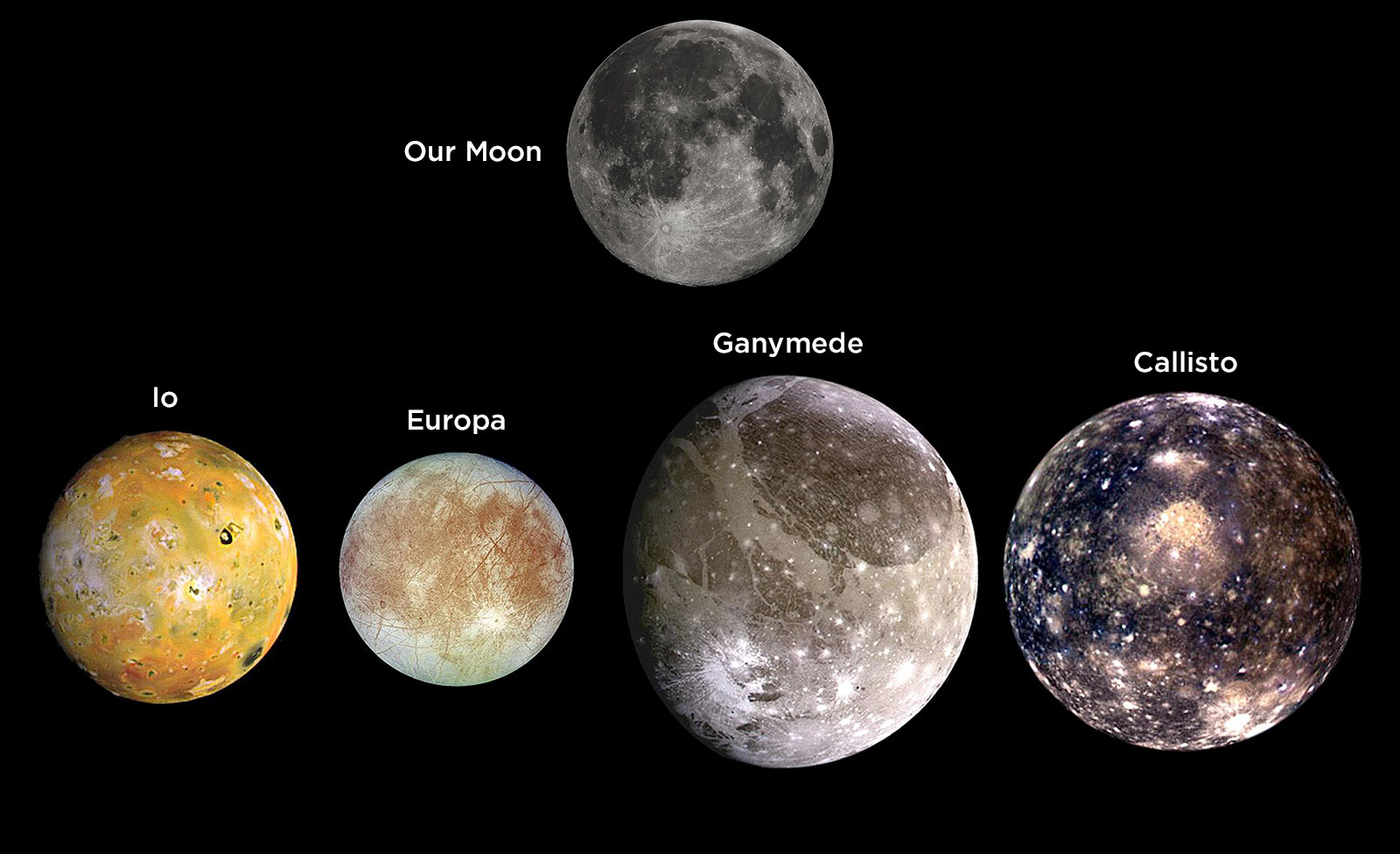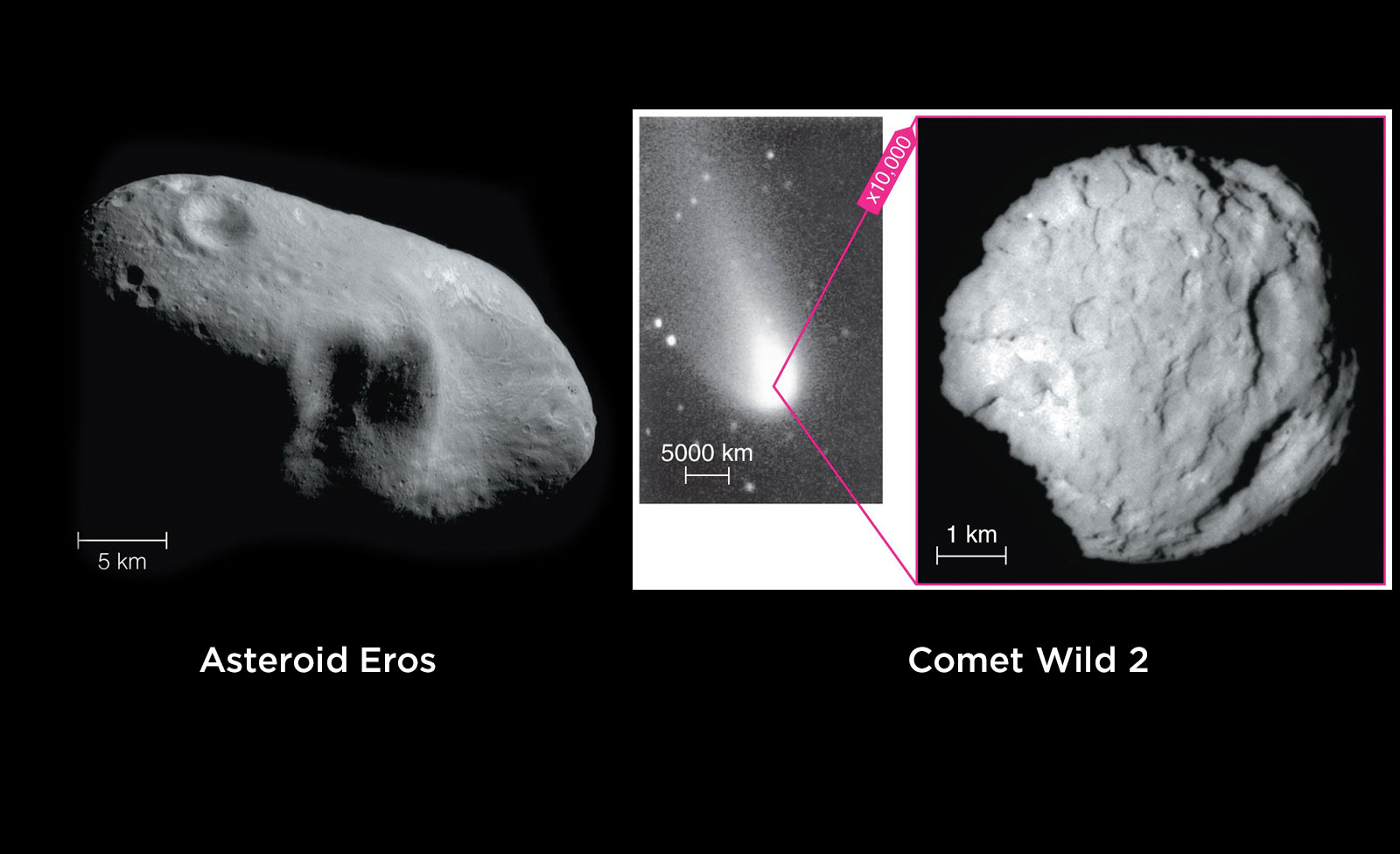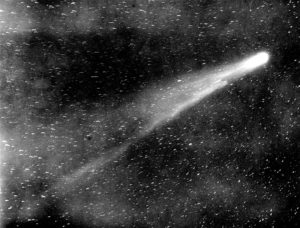Our solar system consists of the Sun and all the objects that orbit it. In other words, our solar system is essentially the Sun’s family, and the family members include:
- the Sun;
- the eight planets: Mercury, Venus, Earth, Mars, Jupiter, Saturn, Uranus, and Neptune ;
- more than 200 known moons, each of which orbits one of the eight planets;
- and lots of smaller objects including rocky asteroids , icy comets , and "dwarf planets" like Pluto and Eris.
The reason all these objects orbit the Sun is gravity. All objects have gravity, and more massive objects generally have stronger gravity. The Sun is by far the most massive object in our solar system, and its gravity is strong enough to hold the planets and other objects in orbit around it.
Note that all the planets orbit the Sun in the same direction and in approximately the same plane. As we’ll discuss in Section 3.4, this is also a result of gravity, and in particular of how gravity first formed our solar system from a rotating cloud of gas. Gravity formed the Sun in the middle, while the rest of the cloud (in which the planets formed) flattened into a rotating disk, much like a spinning ball of dough can flatten out to make a pizza crust.
I was wondering...
Do I have gravity?
Yes: all material things have gravity. But gravity depends on mass. People don’t have much mass, so our gravity is so weak we don’t notice it. Earth has much stronger gravity because it is so much larger than you, and this gravity is what holds you to the ground. Larger planets, like Jupiter, have stronger gravity than Earth, and stars like the Sun have even stronger gravity, because they are far more massive than Jupiter.
Key Concepts: Gravity
Notice the key role of gravity in our own lives on Earth. The Sun’s gravity is what keeps Earth orbiting the Sun. Earth’s own gravity is what makes our planet round and prevents us from flying off into space. And as we’ll see later, gravity also helps explain why Earth is hot inside, and this heat drives the processes that shape Earth’s surface.
Note that all the planets orbit the Sun in the same direction and in approximately the same plane. As we’ll discuss in Section 3.4, this is also a result of gravity, and in particular of how gravity first formed our solar system from a rotating cloud of gas. Gravity formed the Sun in the middle, while the rest of the cloud (in which the planets formed) flattened into a rotating disk, much like a spinning ball of dough can flatten out to make a pizza crust.
Slide Show: Our Solar System
Activity
The Planets
Classify the 8 planets into two groups, considering both their sizes and distances from the Sun. Can you make a case for three groups instead? (Hint: Be sure to study Slide Show 1.2.)
It’s common to divide the 8 planets into:
- the four planets that are small and close to the Sun — Mercury, Venus, Earth, and Mars
- the four planets that are much larger and farther from the Sun — Jupiter, Saturn, Uranus, and Neptune.
However, notice that Jupiter and Saturn are much larger than Uranus and Neptune, and that Uranus and Neptune are also farther from the Sun. This might argue for dividing group (2) into (2a) Jupiter and Saturn and (2b) Uranus and Neptune
Teacher Notes: We haven’t yet talked much about scale and distance from the Sun, but students should be able to look just at the sizes and distance order shown in the figures to answer this question. Can make for an interesting discussion.
Solar System Facts You’ll Want to Know
Do you understand exactly what we mean by all the different object types in the solar system? Try to answer each question below, discussing with classmates if you wish. Then click to see the answer
1. What is the Sun?
The Sun is a star. It looks different from the stars we see at night only because it is so much closer to us. Like all stars, the Sun is essentially a giant ball of extremely hot gas. The energy that makes the Sun shine is produced deep inside the Sun, by a process that we call nuclear fusion.
2. What is a planet?
Actually, scientists argue a lot about the exact definition. Lots of objects orbit the Sun, but the ones we call “planets” are only the 8 largest of these objects. Other stars also have planets orbiting them. Note: In case you are curious, the official definition of a planet is an object that (1) orbits a star (but is itself neither a star nor a moon); (2) is big enough for its own gravity to give it a nearly spherical shape; and (3) is significantly larger than any other object with a similar orbit. (Objects that meet the first two criteria but not the third, such as Ceres, Pluto, and Eris, are designated “dwarf planets.”)
3. What is a moon?
A moon is an object that orbits a planet. All the planets in our solar system except for Mercury and Venus have at least one moon, and some (such as Jupiter and Saturn) have dozens of moons. Many of the moons in our solar system are quite small. Our moon, which we usually call “the Moon” (with capital M) to distinguish it from others, is actually one of the larger moons in the solar system. (More specifically, our Moon is the 5th largest moon in the solar system, after Ganymede, Titan, Callisto, and Io.)
4. What are asteroids and comets?
Asteroids and comets are objects that orbit the Sun but that are too small to count as planets. Asteroids are made mainly of rock or metal, while comets also contain lots of ice. (Note: in the context of the solar system, ice includes not only frozen water but also other substances that freeze solid at low temperatures.) A few of the largest asteroids and comets — the ones that are large enough for their own gravity to have made them round in shape — are called “dwarf planets.” For example, Pluto is very icy, so you can think of it either as a large comet or a dwarf planet; Ceres is rocky, so you can think of it either as a larger asteroid or a dwarf planet.
I was wondering . . .
How do we know that stars are distant suns?
If you simply look at the night sky, it’s not obvious that stars are distant suns. In fact, ancient cultures had many other ideas; for example, some ancient people in the Middle East imagined that all stars lay on a giant sphere surrounding us, and that stars were holes in the sphere where we could see through to the outside. Today, we can be certain that stars are distant suns, because we can measure their sizes, distances, and compositions. These measurements show that while stars vary in some properties, they are all fundamentally like our Sun.
Connections—Etymology
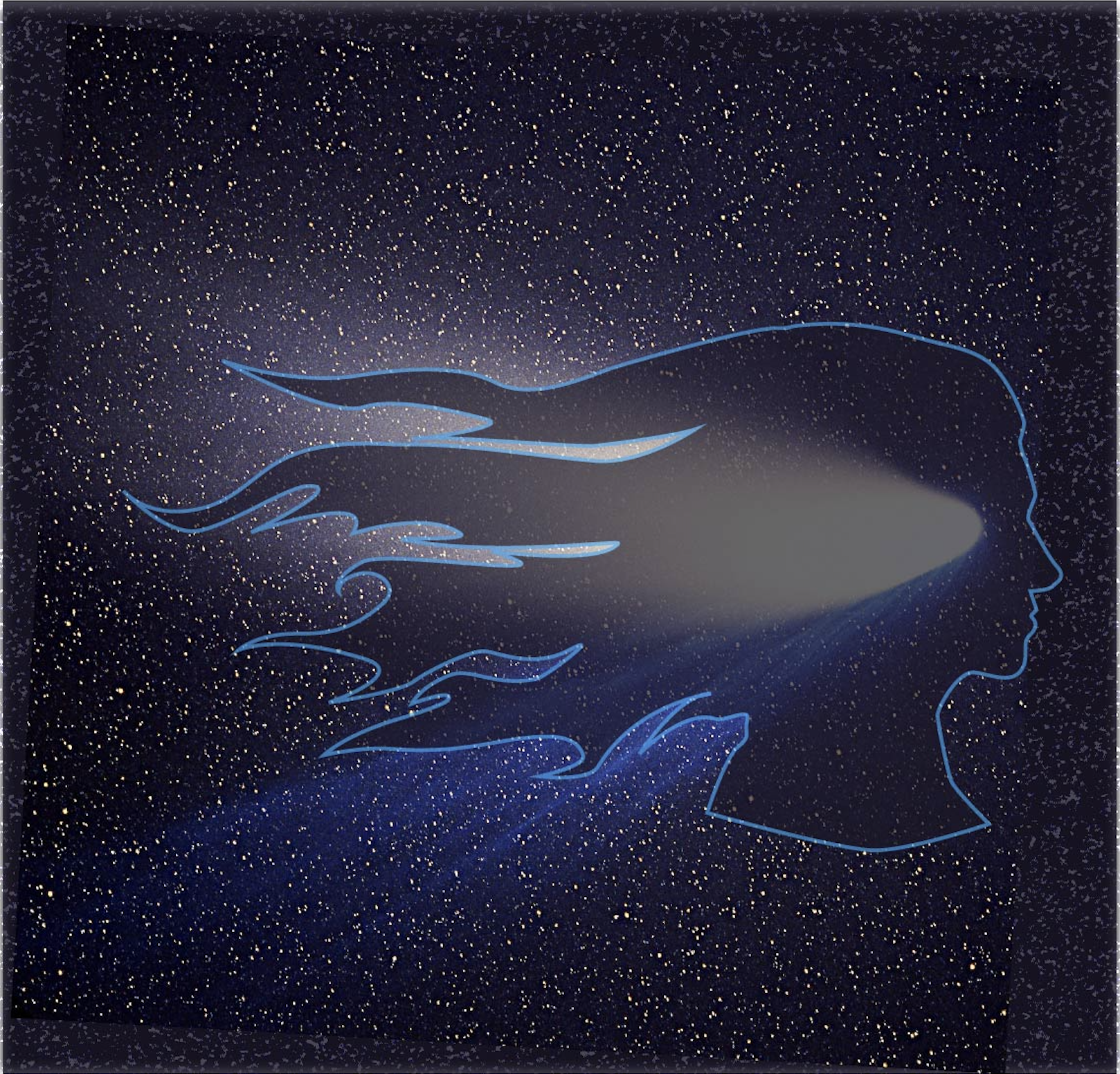
The word "comet" comes from a Greek word meaning "hair" (notice the similarity between the words comet and comb), because a comet in the sky can look like a star with long hair. Today we know that the "hair" is actually the comet's tails, made of particles released from the comet itself.
Connections—History
Comets through the ages
The fact that comets are both spectacular and relatively rare in our night sky led many ancient cultures to assume they must have some special meaning for human events. Indeed, comets were often considered portents of doom, so that the appearance of a comet could lead to widespread fear and panic. Comets were demystified as we learned more about them. A central figure was Edmund Halley, who used Newton’s law of gravity to figure out that a comet seen in 1682 had also been seen on many prior occasions.
In 1705, Halley published a book in which we announced his conclusion that this particular comet orbited the Sun every 76 years, and therefore that it would reappear in the night sky in 1758. Halley died before he could see his work proven correct, but the comet did indeed return on schedule, and was therefore named for him. Halley’s comet last returned in 1986, when several spacecraft were sent out to study it up close. It will next return in 2061.
